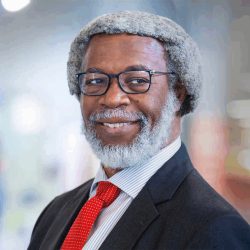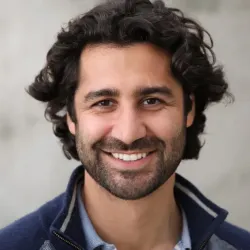The New Frontier
In the 1920s, physicist Albert Einstein predicted that certain gases would behave in strange ways under quantum conditions. As a young researcher launching his career in the 1970s, William Phillips worked simultaneously on testing Einstein’s prediction and finding a way to cool atoms to keep them in a quantum state. The latter work earned Phillips the 1997 Nobel Prize in physics and was critical for producing the peculiar matter that Einstein predicted.
Today Phillips is a College Park Professor in Physics and co-director of the Joint Quantum Institute’s (JQI) Physics Frontier Center, working with researchers who continue to explore Einstein’s prediction and other quantum conundrums. Established in 2008 with a five-year, $12.5 million National Science Foundation (NSF) grant, the center supports researchers in atomic physics and condensed matter physics, which includes studies of solids, liquids and exotic phases of matter. Physics Professor Luis Orozco also co-directs the center, which is one of 10 NSF-funded physics frontier centers. This summer, the NSF renewed its support to the center for another five years.
Many of the center’s scientists, like Assistant Professor of Physics Gretchen Campbell, are conducting basic research aimed at advancing our understanding of the quantum world. Campbell, who is also a JQI Fellow, is a pioneer in atomtronics, an emerging field in which scientists use ultracold atoms to build circuits with the same superconducting properties as some electronic circuits. “This field keeps growing, and we keep discovering new things we can do,” says Campbell, who won a Presidential Early Career Award for Scientists and Engineers in December 2013.
She studies the peculiar quantum material that Einstein predicted in 1924, but was not produced in any lab experiments until 1995. This substance, called a Bose-Einstein condensate of atoms in the gas phase, displays one of the deeply strange aspects of quantum mechanics. In the quantum realm, everything—a desk, a lamp and its light—behaves as both a particle and a wave. In the world of classical physics, we see objects as either particles or waves. But in the quantum realm, wave-particle duality means that sometimes we see both.
Campbell takes a few grams of sodium or strontium and heats them in a tabletop oven to 600 degrees Celsius (1,112 degrees Fahrenheit) to produce a tiny fraction of a gram’s worth of gaseous atoms. She then uses lasers and magnetic fields to chill them to within a few billionths of a degree of absolute zero, the coldest temperature possible. “They get cooler and cooler, move slower and slower, and get closer and closer together,” she says. “Eventually we can no longer distinguish one atom from another. At this point, we could call them either a particle or a wave.”
The gas has now become a Bose-Einstein condensate—an ultracold superfluid that is not simply a collection of separate atoms but a single entity, frictionless and free flowing. In Campbell’s sodium experiment, the condensate flows inside a ring formed by laser beams. Campbell stirs the atoms with another laser beam just as she would stir coffee with a spoon. At a critical stirring speed, Campbell sees the entire gas suddenly move faster, as if every particle in the condensate jumped en masse into high gear.
That jump in speed could lead to a quantum counterpart for today’s inertial sensors, which measure acceleration, rotation and other kinds of motion. Today’s inertial sensors are components in many kinds of instruments that must adapt to movement, from a smartphone’s compass app or a video camera’s image-tracking mechanism to an airliner’s navigational system. Quantum inertial sensors may guide planes and submarines more accurately, and therefore more safely. “The research is in the earliest stages,” says Campbell. “It’s possible there are other atomtronic sensors that will be useful.”
Campbell and colleagues in the Physics Frontier Center say they are not only interested in potential applications, but also profoundly excited by the chance to explore the mysteries of the quantum realm.
“What appeals to me is understanding how things work and the underlying laws of nature,” says Jonathan Hoffman, a Ph.D. student who works with Orozco and JQI co-director Steve Rolston in the center. “The idea of inventing something new is fascinating. But more important, I like exploring new ideas in physics.”
Writer: Heather Dewar
See also:







